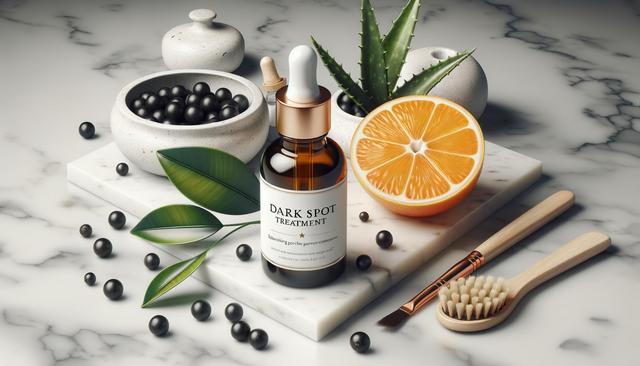
Unmask Your Brightest Skin: Banish Dark Spots for Good!
The Dark Spot Dilemma: Understanding Your Spots (and Your Frustration)
Dark spots, or hyperpigmentation, often result from excess melanin production in specific areas of the skin. While they don’t pose a health risk, they can be emotionally frustrating, particularly when they linger long after the initial cause—like acne, sun exposure, or hormonal changes—has passed. Understanding the source of these spots is the first step toward effective treatment. Common causes include:
- Post-inflammatory hyperpigmentation from acne or injury
- Sun damage or age spots caused by UV exposure
- Melasma, often linked to hormonal fluctuations
- Skin irritation from harsh skincare products
Each type behaves differently, and treating them requires not just patience, but also a targeted approach. The frustration many people feel often stems from not knowing what kind of dark spot they’re dealing with, leading to mismatched treatments and underwhelming results.
Why Some Treatments Fall Short
Many over-the-counter products promise visible improvements but don’t always deliver. This can be due to several reasons. First, not all dark spots respond to the same ingredients. Second, consistency is key—many give up on a product before it has time to work. Lastly, underlying causes like hormonal imbalances or ongoing sun exposure can sustain or even worsen the discoloration.
Common reasons treatments fail include:
- Using products not suited for the specific type of hyperpigmentation
- Skipping sun protection, which can reverse progress
- Inconsistent application or premature discontinuation
- Expecting immediate results rather than gradual improvement
By understanding why some approaches fall short, you can begin to make smarter choices and avoid wasting time and resources on ineffective products.
Your Arsenal Against Dark Spots: Effective Treatment Approaches
Fortunately, there are multiple ways to address dark spots—ranging from topical treatments to professional procedures. The most effective regimens often include a combination of proven ingredients and practices. Key topical options include:
- Vitamin C – an antioxidant that brightens and evens skin tone
- Niacinamide – known for reducing inflammation and improving pigmentation
- Retinoids – help speed up cell turnover and fade discoloration
- Alpha hydroxy acids (AHAs) – exfoliate and promote new skin growth
In-office treatments can also be beneficial, such as chemical peels, microdermabrasion, and laser therapy. These options may be more intensive but often deliver faster and more noticeable results, especially when used alongside at-home routines.
How to Combine Treatments for Maximum Impact
Combining treatments thoughtfully can enhance results while minimizing irritation. For example, pairing a retinoid with niacinamide can boost skin renewal while calming inflammation. However, it’s important not to overload your skin. A balanced routine might look like this:
- Morning: Gentle cleanser, vitamin C serum, moisturizer, sunscreen
- Evening: Cleanser, retinoid or AHA, moisturizer with niacinamide
- Weekly: Exfoliating mask or professional facial, if tolerated
Always introduce new products gradually and patch test when possible. Consulting a dermatologist can help tailor a plan based on your skin type, tone, and sensitivity. The goal is not just to minimize dark spots, but also to support overall skin health during the process.
Real Results: Stories of Transformation Before and Afters
Many people have successfully improved the appearance of dark spots through consistent and informed skincare rituals. For instance, individuals who struggled with post-acne marks often see visible fading within a few months of using retinoids and vitamin C in tandem. Others with sun-induced pigmentation have found success with professional treatments combined with diligent sunscreen application.
While every skin journey is unique, common factors among those who see results include:
- Sticking to a routine for at least 8–12 weeks
- Layering products correctly and using them as directed
- Incorporating sun protection daily—rain or shine
- Adjusting routines based on seasonal or hormonal changes
Before-and-after stories serve as a helpful reminder that progress is possible. They show that with the right tools, knowledge, and patience, clearer and more radiant skin is achievable.
Conclusion: Embrace the Journey to Healthier, Brighter Skin
Dark spots may be stubborn, but they don’t have to be permanent. By understanding their origins, avoiding common treatment pitfalls, and building a thoughtful skincare routine, you can make meaningful progress toward a more even complexion. Whether your goal is to reduce post-acne marks or sun spots, commitment and consistency are key. Unmask your brightest skin by equipping yourself with the right knowledge and tools—because even small changes can lead to visible transformation over time.


